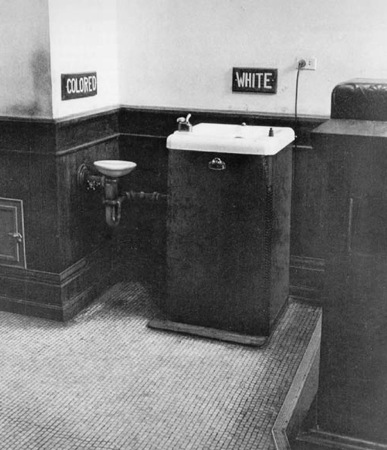UCLA Report Says Charters Are Causing Resegregation Of American Schools
Comments (3)

A review of federal data suggests charter schools are opening a
new frontier of racial segregation. (Creative Commons Licensed)
White students in racially diverse communities across the West are flocking to charter schools in greater numbers than Latinos or African Americans, and the result is a rising re-segregation of public schools, according to a report released Thursday by the UCLA Civil Rights Project.
While white students compose 44 percent of public school bodies in the West, they make up 49 percent of charter populations, according to the report, which is based on an analysis of federal government data and charter school performance across 40 states and the District of Columbia.
UCLA Professor Gary Orfield, co-director of the Civil Rights Project, said in a telephone press conference Thursday that the disproportionate representation of racial groups in the charter school system should be a red flag in the steady march of public education toward free-market mechanics--a march that has swept up Los Angeles Unified School District, which is just now reviewing creative management bids for 30 of its public schools.
"The charter movement has flourished in a period of retreat on civil rights," Orfield said. "The vision of a successfully integrated society - one that carries real opportunities for historically excluded groups of students to enter the mainstream - ought to be a defining characteristic of charter schools. Federal policy should make this a condition for charter school support and should support other choice programs which pursue this goal."
The report, "Choice without Equity: Charter School Segregation and the Need for Civil Rights Standards," highlights several findings that paint charter schools as a type of coagulant--creating clumps of racial and economic homogeneity in areas where the general student population is of varied race and income. For instance, the study finds that white students are over-enrolled in charters across the Western and Southern U.S. while Latinos are under-enrolled in many states where they form the largest segment of the student population. And 70 percent of African American students in the charter system attend schools where at least 9 out of 10 students are racial and ethnic minorities.
The report comes as the spotlight of national and regional attention shines brightly on charters, where enrollment is rapidly rising. (Enrollment in charter schools has nearly tripled since 2000-2001, though it currently accounts for only 2.5 percent of the national public school population.) As recently as Monday, President Barack Obama in his budget proposal called for more incentives and resources around charters.
Los Angeles Unified School District, which saw charter school enrollment grow 19 percent over the last year, in August put management of 12 low performing and 18 new schools on the auction block through the Public School Choice Motion. Charters and partnerships have finished competing for management of the schools, and the board will release the verdicts on Feb. 23.
Jose Cole-Gutierrez, Director of Charter Schools for L.A. Unified, said Thursday the UCLA report would inform the work of the district as it considers the bids. While applicants have promised to serve students within the attendance boundaries where school management is up for grabs, the district may seek stronger assurance from them in light of the report's findings, Cole-Gutierrez said. But he pointed out that many of the schools up for grabs are anchored in neighborhoods that are themselves highly segregated.
"We are proud of the large diversity of our communities," Cole-Gutierrez said. "We want to make sure schools are giving first priority to students in their attendance areas."
The UCLA report also concludes that charter schools across the nation are failing to provide required equity data to the federal government.
"There's room for improvement, in terms of receiving clean, sound data," Cole-Gutierrez conceded. The state, he said, is trying to help school districts on that front through its California Longitudinal Pupil Achievement Data System (CALPADS).
California, which in 1992 became the second state in the nation to put a charter law on the books, has been at the front of the initiative since its birth. And today the Center for Education Reform, a Washington non-profit that advocates for the charter school movement, ranks California's law as the third best (re: least restrictive) nationwide.
The report's findings are sure to be used as new ammunition from critics, who have long said that charter schools take resources away from public schools and act as havens for under-qualified teachers in areas home to the nation's most disadvantaged students.
"This report illustrates how critically important it is for all public schools to be held accountable for providing equitable access and support for diversity, as well as sound educational practices," said Stanford University education professor Linda Darling-Hammond. "Without this commitment across the entire public education system, America cannot provide a fair and just start in life for all of our children."



